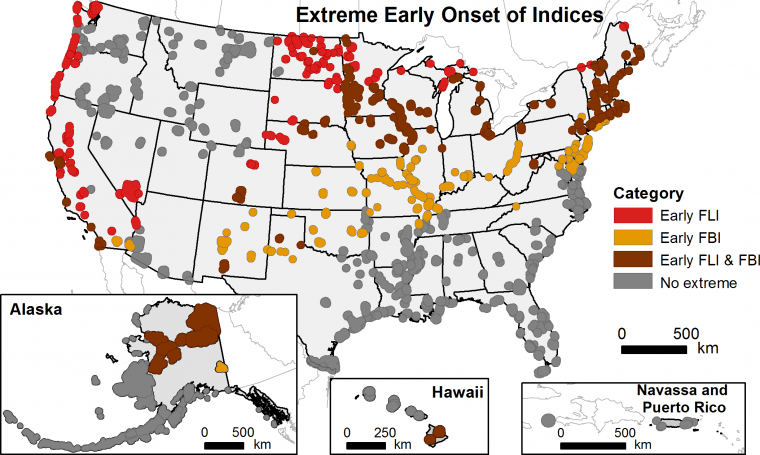
We know that the timing of spring is changing. What does that mean for migratory birds? A new study from USA-NPN and USGS researchers published in PLOS One leveraged the USA-NPN's Spring Index models to understand trends in the timing of spring. We found that in recent decades, spring is arriving early in three-quarters of national wildlife refuges and extremely early in half of refuges. These changes are not consistent across the latitudinal extent of migratory flyways, with spring advancing significantly faster in the north for most flyways.
Refuge staff, visitors, and others can explore these findings via a new tool on the USFWS Phenology Network website called Long-term changes in the Status of Spring. Click on a Refuge to find out the average onset date of spring in recent decades, how the onset of spring in recent decades compares to a long-term average, and how the timing of spring at that refuge fits into the larger migratory flyway.
The research was highlighted in a USGS Featured Story: Will the early bird still get the worm? (Sep 12, 2018)
This research has also been featured in the following popular articles and podcasts:
The Guardian: Trump administration poses new threat to birds in allowing 'incidental' killings (Sep 21, 2018)
Inside Climate News: Spring is coming earlier to wildlife refuges, and bird migrations need to catch up (Sep 17, 2018)
Popular Science: Our seasons are out of whack, which is really bad for migrating birds (Sep 13, 2018)
EurekAlert!: Spring is advancing unevenly across North America (Sep 12, 2018)
Discover Magazine: Spring is arriving earlier, messing with bird migrations (Sep 12, 2018)
Scientific American podcast: Earlier springs may mean mistimed bird migrations (Sep 12, 2018)